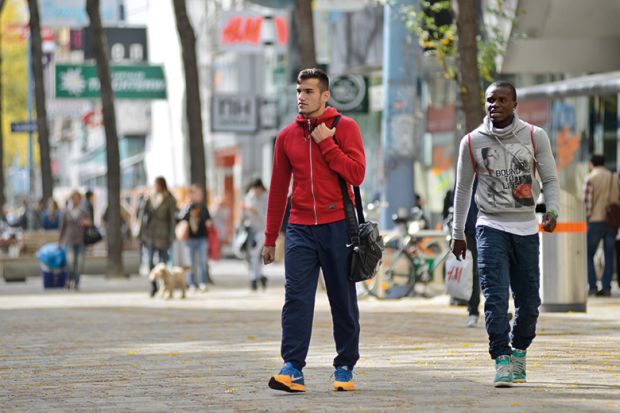With nearly 50 per cent of young British people in higher education today, universities represent ideal places for mixing and integration. In a society that is largely divided on ethnic grounds, such institutions could have an impact in shaping tolerance, respect and mutual understanding between groups, all of which is so important if we are to address the issues facing multicultural society.
Right now, the subjects of race, ethnicity and faith are hugely contentious in the UK, representing a key challenge for public policy, educational institutions, civil society organisations and the wider public. The Casey Review last year showed the true extent of divisions within society, with people leading separate parallel lives. Work at the University of Bath on ethnic segregation in UK universities confronts this wider social and policy debate, and reveals for the first time the true extent and nature of the ethnic make-up of UK universities and courses.
Our three-year programme of interdisciplinary research, funded by the Economic and Social Research Council, is looking at the very issue of spatial and social mobility in higher education within the UK. It is getting to the heart of what it means to transition from home to university for different social and ethnic groups – and how this is implicated in wider social and ethnic inequalities in society. We are directly addressing the issues of why different social and ethnic groups are growing apart in lots of different ways, why inequalities are maintained and becoming more ingrained, and what the higher education system in the UK needs to do in order to make a difference.
The latest findings from our work on ethnicity make for depressing reading. We have mapped out in micro-level detail the ethnic make-up of each university and course in the UK, to bring to the fore the extent and nature of ethnic inequalities in universities and courses (data available here). While going away to university is often thought of as a time when you mix with people from different social and ethnic backgrounds, we find that it is largely an experience of continuity in terms of the ethnic groups students are likely to encounter.
Our analyses show that the majority of students from neighbourhoods in the bottom 40 per cent for ethnic diversity generally go to universities which are in the bottom 40 per cent for ethnic diversity. This is particularly true for students from the least diverse 20 per cent of neighbourhoods. Over 50 per cent of students from the most diverse fifth of neighbourhoods attend the most diverse universities. While most ethnic minority students attend ethnically diverse institutions, we also find differences between minority groups, with over two-thirds of British Bangladeshi students attending super-diverse, largely London institutions.
But what is more striking is the segregation evident across university degree courses.
Subjects of study are even more segregated than universities, and certain subjects have huge problems with their ethnic diversity. For example, black Caribbean students accounted for 0.3 per cent of all new medical and dentistry students in the UK – just 25 students. While minority ethnic students are slightly over-represented as a whole on medicine and dentistry courses, this is not the case for black Caribbean students. Nearly 95 per cent of those going on to study veterinary science were white, with just over 50 students from non-white backgrounds.
These ethnic divisions in areas of study mean that certain professions inevitably end up being ethnically divided and have knock-on effects in terms of how certain jobs and professions are perceived.
These findings make for stark reading. They tell a worrying tale of a lack of representation within universities and courses, which have knock-on effects in reproducing the wider ethnic segregation we see in society, as highlighted by the Casey Review last year.
The diversity of universities and courses matters because it affects the way young people perceive what is possible for themselves. If 95 per cent of those who study veterinary science are white, what does this mean for how the veterinary profession is perceived? It matters because the UK does not fare well in terms of social mobility; and ethnic inequalities contribute to this.
In our qualitative work with young people, we see that the choices young people from ethnic minority backgrounds make are being shaped by their feelings and perceptions about the ethnic make-up of universities. We hope our analysis and the tables we have published will help work on addressing ethnic inequalities in our universities and courses move forward.
Michael Donnelly and Sol Gamsu are researchers in the Department of Education and Institute for Policy Research at the University of Bath.
Register to continue
Why register?
- Registration is free and only takes a moment
- Once registered, you can read 3 articles a month
- Sign up for our newsletter
Subscribe
Or subscribe for unlimited access to:
- Unlimited access to news, views, insights & reviews
- Digital editions
- Digital access to THE’s university and college rankings analysis
Already registered or a current subscriber?






